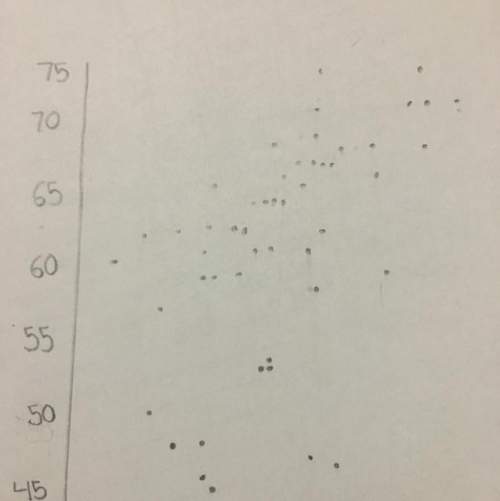
Mathematics, 20.09.2019 03:00 jasmine3051
Click an item in the list or group of pictures at the bottom of the problem and, holding the button down, drag it into the correct position in the answer box. release your mouse button when the item is placed. if you change your mind, drag the item to the trash can. click the trashcan to clear all your answers.
if a chord 10 inches long is 5 inches from the centre of a circle, find the radius of the circle.
x = (i'm given numbers 1-9)

Answers: 1


Another question on Mathematics

Mathematics, 20.06.2019 18:02
Atile pattern on a wall is made up of two identical parallelograms and three identical triangles. what is the area of the tile pattern ? what is the area of the tile pattern?
Answers: 2

Mathematics, 21.06.2019 20:00
The two cylinders are similar. if the ratio of their surface areas is 9/1.44 find the volume of each cylinder. round your answer to the nearest hundredth. a. small cylinder: 152.00 m3 large cylinder: 950.02 m3 b. small cylinder: 972.14 m3 large cylinder: 12,924.24 m3 c. small cylinder: 851.22 m3 large cylinder: 13,300.25 m3 d. small cylinder: 682.95 m3 large cylinder: 13,539.68 m3
Answers: 2

Mathematics, 21.06.2019 20:30
I’m on question 7 it says a covered water tank is in the shape of a cylinder the tank has a 28 inch diameter and a height of 66 inches to the nearest square inch what is the surface area of the water tank
Answers: 2

Mathematics, 21.06.2019 21:30
In a test for esp (extrasensory perception), the experimenter looks at cards that are hidden from the subject. each card contains either a star, a circle, a wave, a cross or a square.(five shapes) as the experimenter looks at each of 20 cards in turn, the subject names the shape on the card. when the esp study described above discovers a subject whose performance appears to be better than guessing, the study continues at greater length. the experimenter looks at many cards bearing one of five shapes (star, square, circle, wave, and cross) in an order determined by random numbers. the subject cannot see the experimenter as he looks at each card in turn, in order to avoid any possible nonverbal clues. the answers of a subject who does not have esp should be independent observations, each with probability 1/5 of success. we record 1000 attempts. which of the following assumptions must be met in order to solve this problem? it's reasonable to assume normality 0.8(1000), 0.2(1000)%30 approximately normal 0.8(1000), 0.2(1000)% 10 approximately normal srs it is reasonable to assume the total number of cards is over 10,000 it is reasonable to assume the total number of cards is over 1000
Answers: 1
You know the right answer?
Click an item in the list or group of pictures at the bottom of the problem and, holding the button...
Questions

Mathematics, 24.12.2019 21:31


Mathematics, 24.12.2019 21:31

English, 24.12.2019 21:31

Social Studies, 24.12.2019 21:31

Mathematics, 24.12.2019 21:31



English, 24.12.2019 21:31

Mathematics, 24.12.2019 21:31

Geography, 24.12.2019 21:31


Mathematics, 24.12.2019 21:31






History, 24.12.2019 21:31





